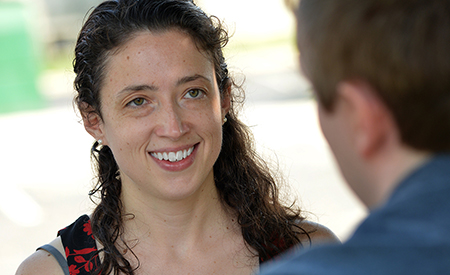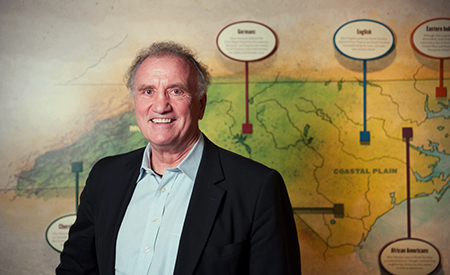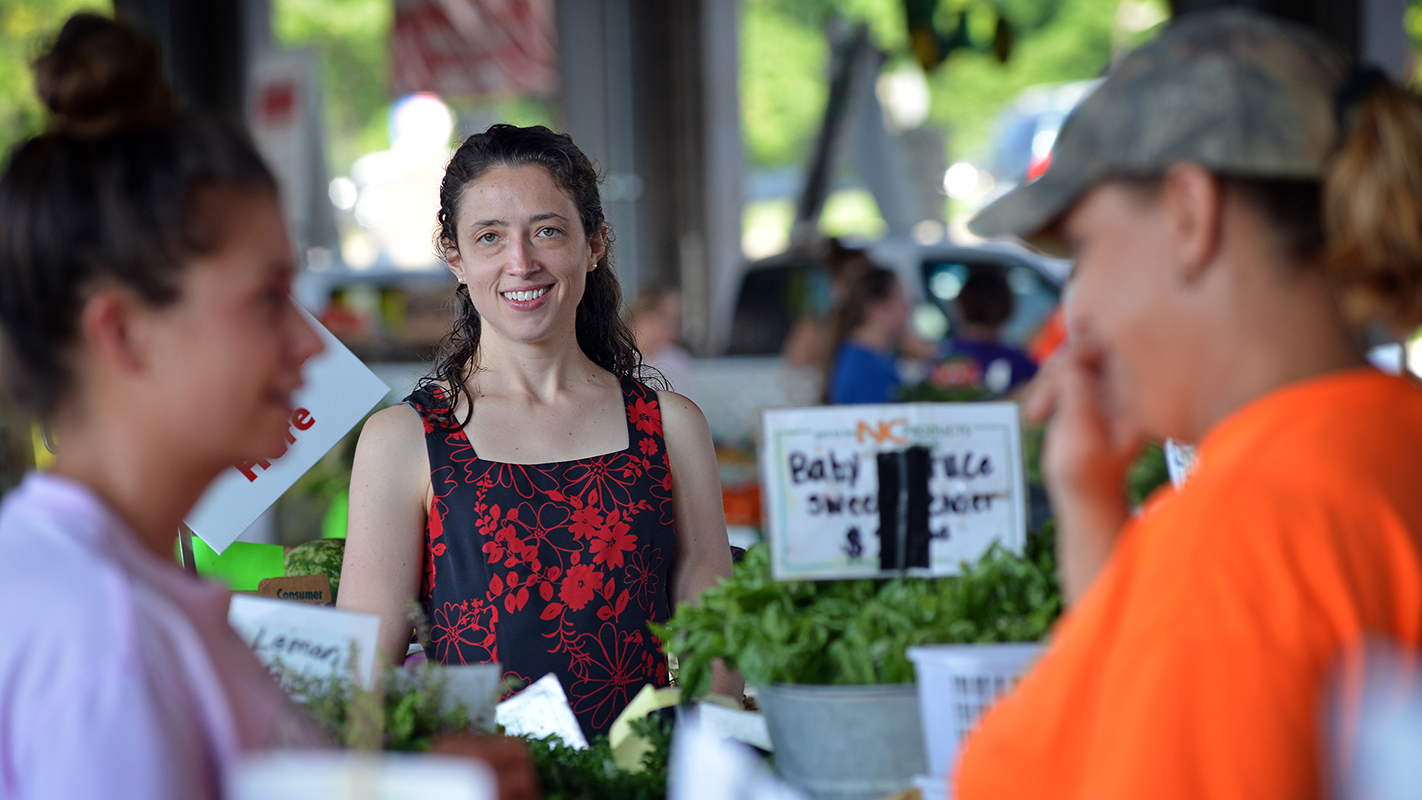For more than half a century, the familiar Southern accent has been fading in Raleigh. Its disappearance has been so slow and so subtle that locals may not even have noticed. But for Robin Dodsworth, an associate professor in sociolinguistics at NC State, the decline tells the story of rapid social change across the urban South.
“It’s not as though, all of a sudden, everyone said, ‘Let’s lose this Southern dialect,’” says Dodsworth. “So what caused this to happen? What is the interface between language and society?”
Sociolinguists like Dodsworth examine how factors such as ethnicity, gender, education and class affect how we speak. Everything from the words we choose to the way we pronounce our vowels is influenced by a complex web of social interactions and expectations. By analyzing our speech, sociolinguists can begin to untangle that web of social dynamics.
“We want to help people recognize the cultural value of how they speak.”
—Robin Dodsworth
Starting in 2008, Dodsworth and other researchers at NC State recorded hundreds of hour-long sociolinguistic interviews with people who grew up in Raleigh. By comparing properties of the recordings using acoustic analysis software, Dodsworth could measure just how “Southern” each speaker’s vowels were. She then tracked the prevalence of certain linguistic features — for example, the pronunciation of “kid” as “kee-yid” — among Raleigh natives who were born in different decades.
Dodsworth discovered that the vowels of speakers born between 1920 and 1950 were remarkably stable. Then, in the middle of the 20th century, Southern linguistic features began to steadily decline. But why?
The White-Collar Tide
The answer was Raleigh’s emergence as a technology hub in the 1960s. One of the largest high-tech research and development centers in the country, the Research Triangle Park, was built in 1959, heralding a decline in the area’s traditional Southern dialect.

“After that, IBM arrived in the early ‘60s,” notes Dodsworth. “If you’re born in 1950, you’re in junior high right about the time when those white-collar workers are coming down from Northern places to work.”
That sudden and sustained influx of workers — and their children — sparked what Dodsworth calls a “dialect contact situation” in Raleigh. Children who attended school in the 1960s and 1970s grew up speaking with less of a Southern accent than their parents, in large part because they spent their days talking with many more Northerners.
“One thing we know in sociolinguistics is that your accent largely depends on your peers,” Dodsworth confirms. “It doesn’t matter as much how your parents speak or who you heard on NPR. Who is it that you’re seeing every single day and having to get along with? That’s the people at school.”
Through her analysis of K-12 networks in Raleigh, Dodsworth found correlations between the increasing social diversity of the city and the slow “leveling” of its traditional accents. It also helped to explain why rural areas — or even the parts of Raleigh that saw the least inward migration — remain the most Southern-sounding.
“Linguistic changes often jump from city to city at first and leave the rural spaces in between untouched for some time,” says Dodsworth. “Part of that is that rural areas have a less concentrated population, so it’s harder for change to spread.”
Documenting Language Difference
Those rural areas are often the focus of other research undertaken by the university’s linguistics program. Walt Wolfram — the first William C. Friday Distinguished Professor of English at NC State — has spearheaded the NSF-funded Language and Life Project, which produces documentary films showcasing linguistic diversity, from Appalachian “mountain talk” to the Atlantic coast’s “Core Sounders.” In this way, NC State linguists help to preserve language differences and share them with the public.

Wolfram’s forthcoming film, Talking Black in America, explores the diversity of language among African Americans and African diaspora communities, shedding light on the variety of English that most often endures negative stereotyping and discrimination. Dodsworth and her graduate students, meanwhile, have been involved in the preservation and study of oral histories concerning Chavis Park in southeast Raleigh, a site of deep social significance for the historically black community it serves.
“Language is part of the Southern tradition and culture, and across North Carolina you have all these pockets of linguistic diversity,” says Dodsworth. “These projects are an effort to make our research relevant to people who are proud of their heritage — or insecure about their heritage. We want to help people recognize the cultural value of how they speak.”
Note: A version of this story first ran on the National Science Foundation website.
- Categories:



